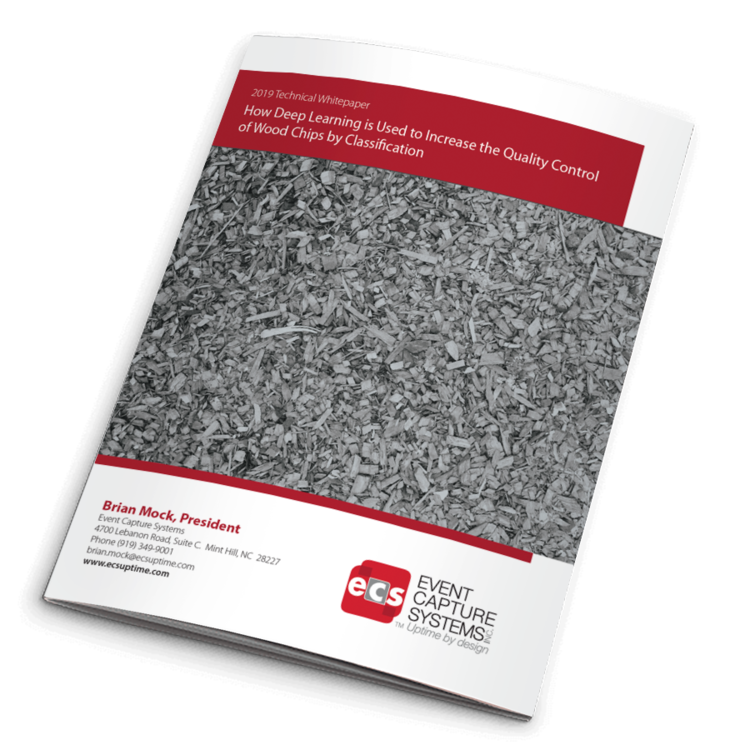Use Deep Learning to Increase the Quality Control of Wood Chips by Classification
An online and real-time camera-based inspection system positioned to monitor the wood chips from an incoming source can provide a breakdown of key wood chip parameters per time unit. Based on the time of inspection, the resulting classification can be tied back to the supplier (external or internal). The mill can then benchmark the actual chip quality parameter against set quality standards to determine corrective actions to provide optimum outcome of this raw material as it becomes paper. Additionally, wood chip suppliers can be financially penalized for supplying a quality level that is less than predetermined standards.
The resulting financial benefit for online and real-time chip inspection has several key impacts on the paper production facility:
Reduce cost - The overall cost of the raw material may be reduced by financially penalizing vendors for supplying low-quality wood chips.
Increase quality - The overall quality of incoming wood chips may be increased while maintaining the same price point.
Incentivize vendors - There may be more incentive for vendors to provide better wood chip quality.
Optimize production processes - Feedback may be provided directly to internal chip processes to correct and/or improve production processes.
Increase capacity – By understanding incoming chip quality to the digestor this process can have dynamic control to maximize output and minimize fiber waste
Reduce waste - Less paper waste is created from producing less off specification product.
Reduce downtime - Less production downtime may result in reducing the number of paper breaks.
Increase production speed - Paper production may be increased by increasing paper machine speed.
WHAT IS IT MEASURING?
The program identifies and measures the contours of the chips and this information is used to develop thickness histograms.
Think of a batch of different size ice cubes in a pot of boiling water. Chips of different sizes will melt to water at similar times despite being of significantly different areas/volumes as well as different melt times for same sizes. In the same manner, chemical penetration in a digestor is also dependent on the shape of the chips. The challenge is to provide actionable data to mill operations that correctly identifies the ongoing variations of chip size.
Why Chip Classification matters
The greatest expense to fully integrated papermills are the raw material wood chips that make up the slurry that later becomes paper on the reel of the machine.
Random and off-line sampling of the chips provides less than .01% classification of the material. Chips that are off-specification in size, wrong species or contaminated with bark and other foreign matter can greatly impact the subsequent paper making process.
Additionally, vendors or internal suppliers that sell or provide these chips to the mill cannot be held to any penalty or feedback loop for supplying chips outside set quality standards.
Read the award-winning whitepaper
WE UNDERSTAND YOUR SOLUTION NEEDS
This is not a problem that traditional computer programming can solve – it is a perfect application for Deep Learning. ECS has built a machine vision tool that ‘learns’ from what it sees based on a set of instructions so that you can ensure you’re getting the chips you paid for optimized for your process.
Simple to Install and Maintain
Small Installed Footprint with Minimal Field Components
High Sustainable ROI
Provides Actionable Data







